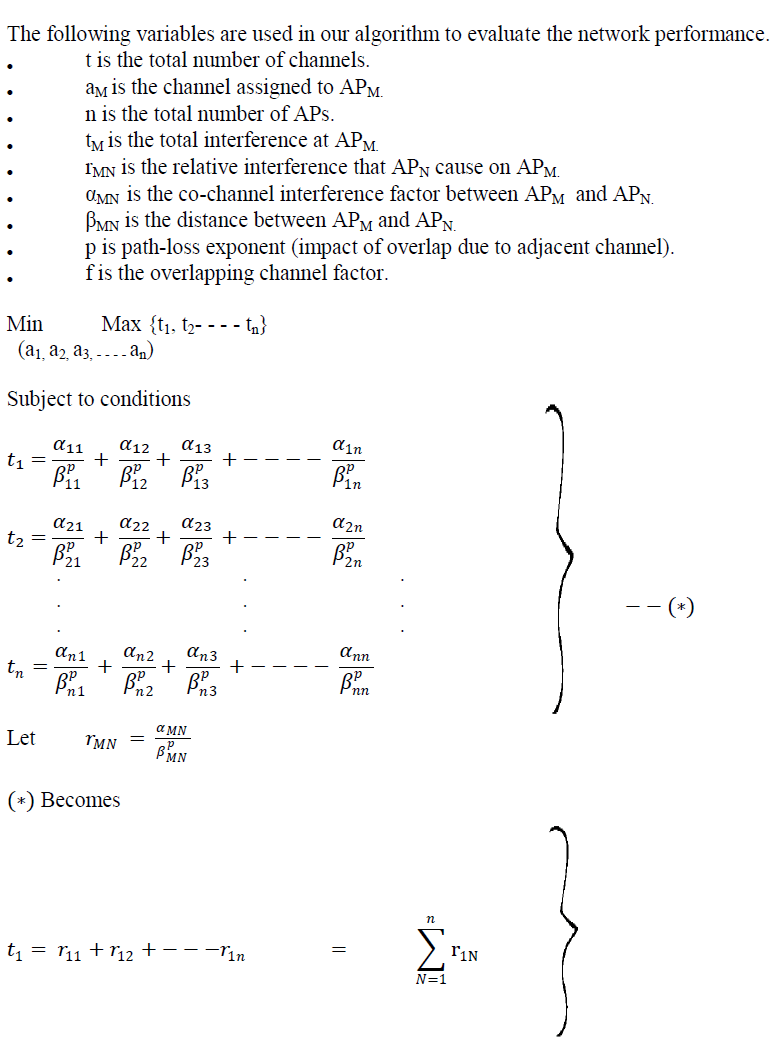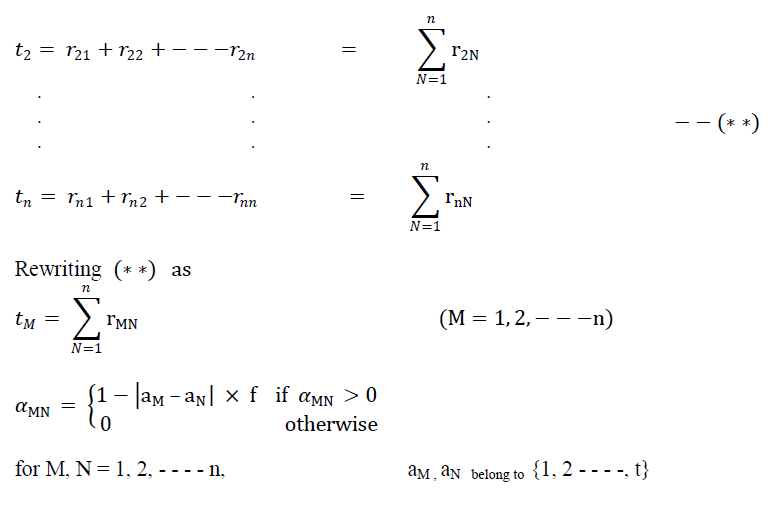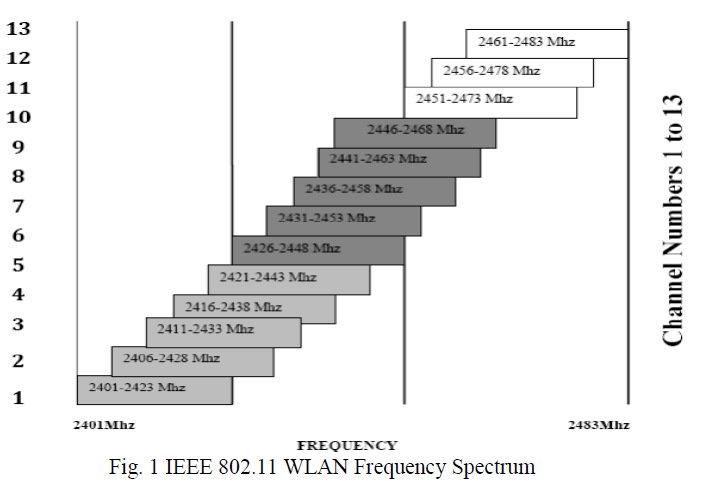ISSN ONLINE(2319-8753)PRINT(2347-6710)
ISSN ONLINE(2319-8753)PRINT(2347-6710)
| Ranjan Kumar 1 , G. Sahoo 2 , K. Mukherjee 3 P.G. Student, Department of Computer Science & Engineering, Birla Institute of Technology, Mesra, Ranchi, India1 Professor & Head, Department of Information Technology, Birla Institute of Technology, Mesra, Ranchi, India2 Assistant Professor, Department of Computer Science & Engineering, Birla Institute of Technology, Lalpur, Ranchi, India3 |
| Related article at Pubmed, Scholar Google |
Visit for more related articles at International Journal of Innovative Research in Science, Engineering and Technology
Cloud Computing is one of the paradigm in the field of IT. This technology uses the internet and central remote servers to maintain data and applications. There are heterogeneous environment, so, the utilization of resources are accessed and analyzed in real time manner. We are trying to put all the resources in the cloud, so that we can use it from any place at any time. These resources will be of pay-per-use in nature. As for example we recharge our mobile phones and pay electricity bills as per our use. So, the motto of cloud computing is to provide On-demand IT resources as pay-per-use basis. These IT resources consists of different web services. So it is always a challenging job.This paper proposes a model based on Ant Colony Optimization for proper utilization and to reduce congestion
Keywords |
| Cloud Computing, Ant System, Web Services, Job schedulers |
INTRODUCTION |
| Cloud Computing is a technology which uses internet and one remote server to maintain data and various applications. It provides cost effective IT resources as cost on-demand IT based on the actual usage of the customer. Cloud Computing is dynamic in nature. So, prediction based analysis is not possible and performance monitoring of any application in cloud computing is very much important as well as complex. Due to rapid growth of IT market, many companies are unable to handle this IT requirement even after having an inhouse data centre. So, cloud services handle these resources very easily and helps to improve IT capabilities without investing large amounts in new data centers. These technology helps companies with much more efficient computing by centralizing storage, memory, processing and bandwidth. The IT resources include different computational web services of different nature like weather information web service, shipping status web service, tax-calculation web service etc. These web services are programmable and reusable. They are available any where via the internet. This model is composed of five essential characteristics, three service models, and four deployment models. |
| The five essential charactersistics are as follows |
| 1. On-demand self service |
| 2. Ubiquitous network access |
| 3. Resource pooling |
| 4. Location independence |
| 5. Rapid elasticity |
| The services models are as follows. |
| 1. Software as a Service (SaaS) : use provider application over a network. |
| 2. Platform as a Service (PaaS) : Deploy customers created applications to a cloud. |
| 3. Infrastructure as a Service (IaaS) : Rent processing, storage, network capacity and other fundamental computing resources. |
| The deployment models, which can be either internally or externally implemented, are as follows. |
| 1. Private Cloud : Enterprise owned or leased. |
| 2. Community Cloud : Shared infrastructure for specific community. |
| 3. Public Cloud : Sold to the public, mega-scale infrastructure. |
| 4. Hybrid Cloud : Composition of two or more Cloud. |
| The programs or application in the cloud can be use any where in the world at any time. The potential of web services is unlimited. For example, a user wants to scan his/her system with antivirus. Then he/she can use any antivirus with the latest update. The user will not bother about the updates of antivirus. The user will only pay the required amount. The required amount will be also very low as compared to the full year subsricipition of antivirus. In future, a collection of such web services may replace packaged software. The web services consists of three layers as given below. |
| Layer 3. Server infrastructure to deploy and operate the web services. But these web services are randomly scattered over different web server and accessing and scheduling them is really a challenging job. For this we have used Ant Colony Optimization : The Travelling Salesman problem. The TSP is chosen for several reasons. . |
| 1. It is a shortest path problem to which the ant colony metaphor is easily adapted. |
| 2. It is problem of NP-hard and it has been studied a lot. |
| 3. It is design to teach people |
| Ant system is a population based metaheuristic which is capable to find shortest path and approximate solution of difficult optimization problem. |
| Organization of this paper is as follows: Related work is discussed in section II. Proposed Ant Colony Optimization is discussed in section III. Experimental Setup is discussed in section IV. And section V gives the details of the simulation result. |
II. RELATED WORK |
| Marco Dorigo and Luca Maria Gambardella [1] described an artificial ant colony, that was capable of solving TSP. They described about the real and artificial ants. Real ants are capable of finding the shortest path from a food source to the nest without using visual cues. Also, they are capable of adapting to changes in the environment, for example finding a new shortest path once the old one is no longer feasible due to a new obstacle. Kumar Nishant, Pratik Sharma, Vishal Krishna, Chhavi Gupta, Kuwar Pratap Singh, NItin and Ravi Rastogi [4] discussed about the algorithm for load distribution of workloads among nodes of a cloud by the use of Ant Colony Optimization (ACO). This is a modified approach of ant colony optimization that has been applied from the perspective of cloud or grid network systems with the main aim of load balancing of nodes. Sarayut Nonsiri and Siriporn Supratid [6] discussed about the ACO that allows fast near optimal solutions to be found. It is useful in industrial environments where computational resources and time are limited. Like several search methods, being trapped in nontrivial difficulty for ACO. Nidhi Jain Kansal and Inderveer Chana [16] discussed various types of Load Balancing Techniques in Cloud Computing like Vector Dot, CARTON, Compare and Balance, Honeybee Foraging Behavior etc. Birattari, Dorigo and Stutzle[11] discussed about ant colony optimization.They also discussed about parallelization and parallel population based meta-heuristic. A system of n parallel processors is generally less efficient than a single n-times faster processor, but the parallel system is often cheaper to build, especially if we consider clusters of PCs or workstations connected through fast local networks and software environments such as Message Passing Interface. This makes clusters, currently, one of the most affordable, and therefore adopted parallel architecture to develop parallel algorithms. The availability of parallel architectures at low cost has widened the interest for the parallelization of algorithms and metaheuristics. |
III. PROPOSED ANT COLONY OPTIMIZATION |
| Marco Dorigo first introduced the Ant System (AS) in his Ph.D thesis in 1992. Ants are very small insect and they are capable of finding shorter path. Ant left out some chemical called Pheromone while moving. The „moving of an antâ and the „deposition of pheromone by an antâ are approximately the same speed and the same rate. The chemical attracts another ants to follow that path. The pheromone evaporates after some amount of time. When large amount of ant move through the same path, the intensity of pheromone increases. The intensity of pheromone depends upon two factors. |
| 1. Distance of food |
| 2. Quality of food. |
| In context of Cloud Computing the „foodâ implies different web services. The path which is rich in pheromone is mostly chosen by other ants, the reason behind this is that the shorter path will receive a greater amount of pheromone than longer path because the ants choosing the shorter path will reach to food early and return to the nest by same path due to un-evaporated of pheromone. So, the shorter path have more amount of pheromone and finally all ants chooses the shorter path. |
| Ant Colony Optimization state Transition Rule. |
| The probability with which ant k currently at stage i choosing to go to stage j . |
 |
 |
| The Proposed Algorithm is defined as follow. |
| Step 1 : Randomly select a Job Scheduler. |
| Step 2 : Job Scheduler Schedules job to different web services. |
| While Job is not schedule to web services |
| Repeat steps 3 & 4. |
| Step 3: Job checks its surrounding area for availability of web services with Probability, |
 |
| Step 4 : if |
| Web server is available |
| Then |
| Acquire web server |
| Else |
| Go to step 3 |
| Step 5 : Return to the Job Schedular. |
| Step 6 : After completition kill the job. |
| Step 7 : End |
| The Web Services have some amount of load at any time, since non of the processor get idle. The decision point makes ants to realize the Load of different Web Services. |
IV. EXPERIMENTAL SETUP |
| To evaluate the performance of Ant Colony Optimization results were simulated in Window 7 basic(64-bit), i3 processor, 370 M processor, 2.40 GHz of speed with memory of 3 GB and language used C++. There are 10 job sechedulers and 44 different web services. The different job sechedulers sechedules job to different web services. These web services have different amount of load. The loads increments and decrements according to the job schedulers and job completion by each job secheduler. The number of ants in this simulation varies from 1 to 1000. These ants randomly selects nest (job secheduler) and the job secheduler assigns these ants to food (web services). |
V. RESULTS |
| We have experimented by taking different amount of number of ants and the time taken to assign the web services. The table 1 shows the number of ants and time taken to assign the web services in microsecond. |
 |
| From the table 1, we conclude that as the number of ants increases , the time also increases but there is not much difference in time. This shows that the more number of work comes to job secheduler, the less amount of time to sechedule the jobs. |
 |
VI. CONCLUSION |
| In this paper, we have proposed a new method for load balancing in Cloud Computing. Here we have focused only on accessing different web services. Secheduling of different jobs to different web services in less amount of time. |
ACKNOWLEDGMENT |
| I would like to thank the faculty members and friends in the Department of Computer Science at B.I.T Mesra for their critical feedback of this work |
References |
|